
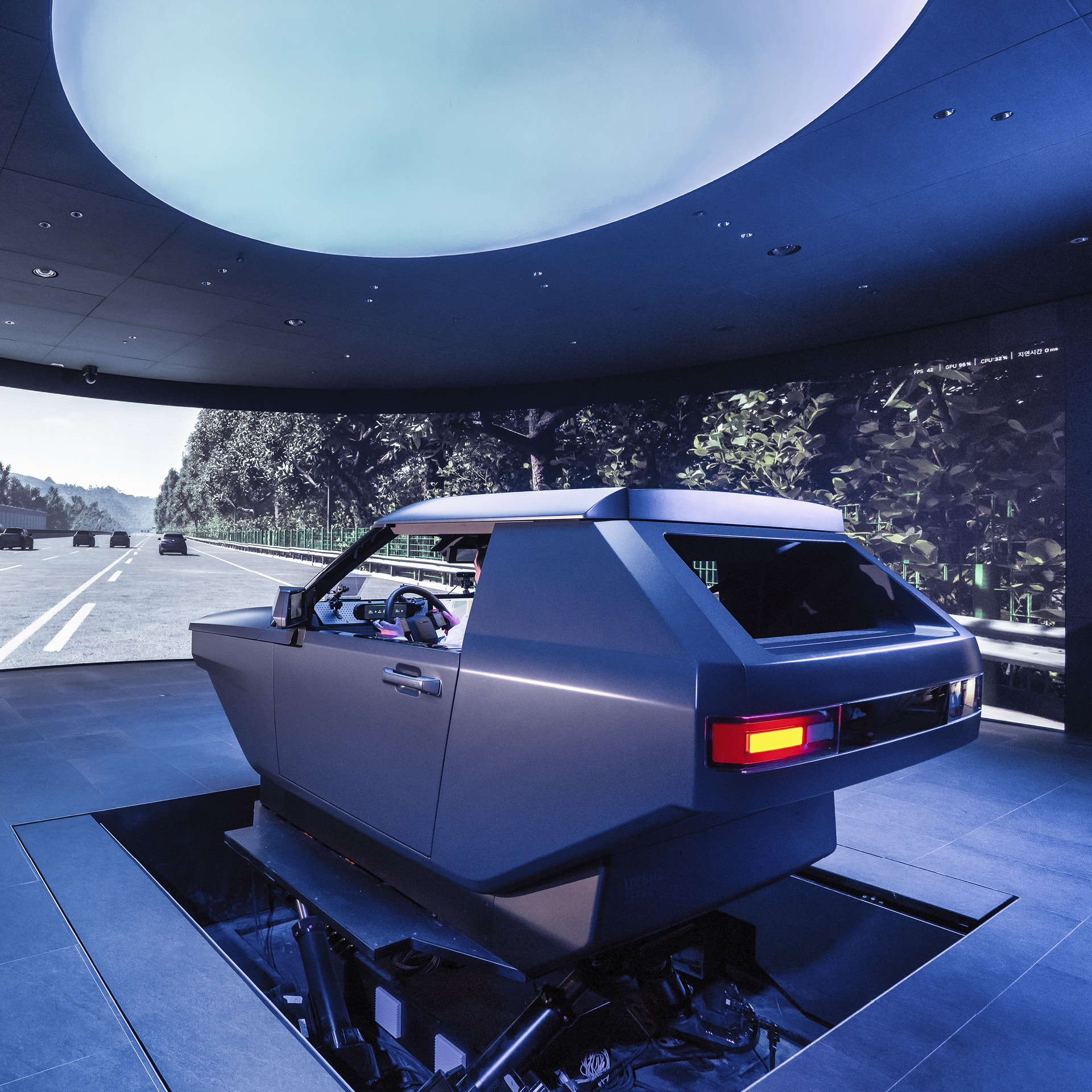


2025.07.17 Hyundai Motor Group
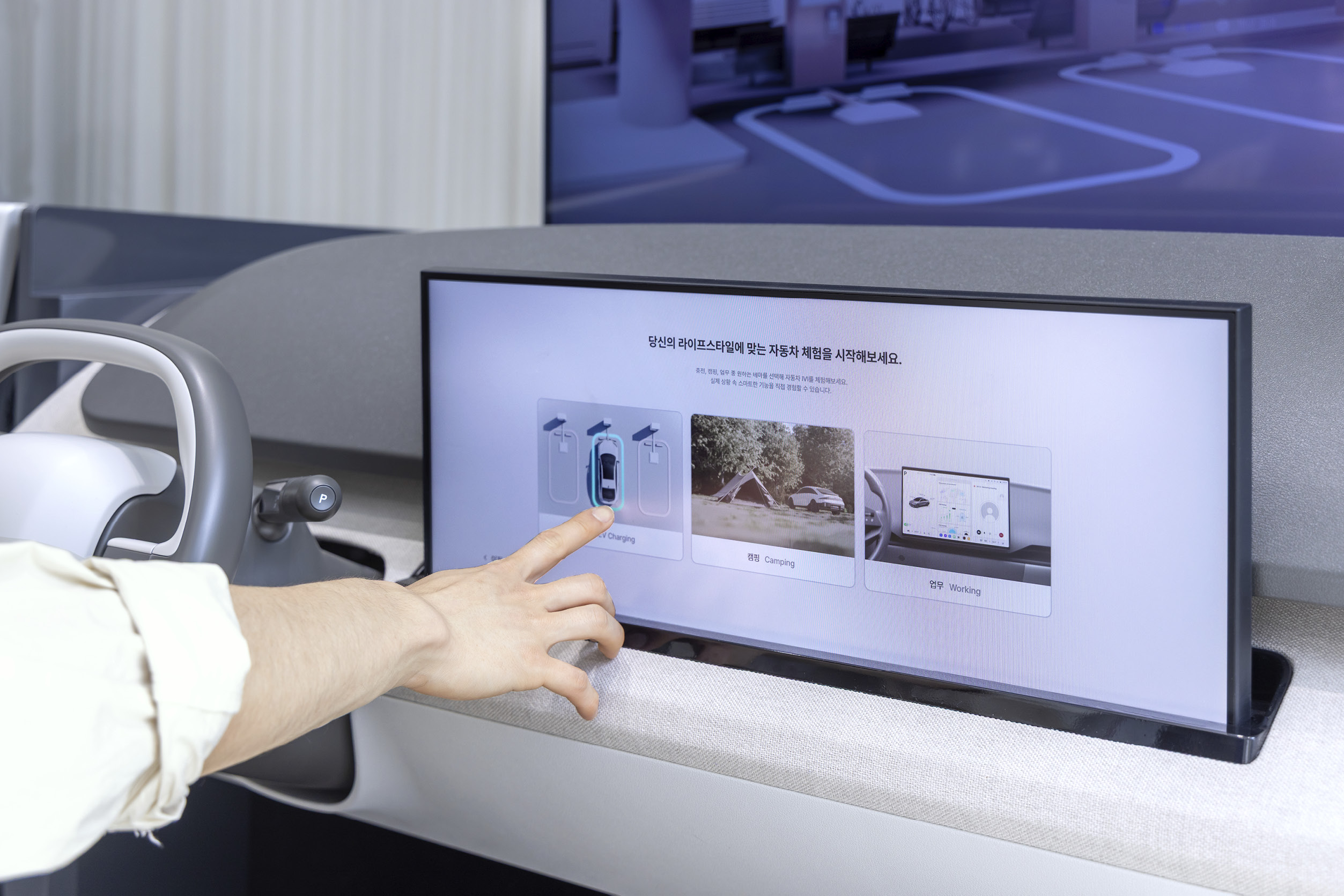
From Seoul to Frankfurt, Shanghai, and Irvine, Hyundai Motor Group’s UX Studios have served as platforms for exploring next-generation mobility experiences through active communication and empathy between UX researchers and users. Now, the Group is taking a step further—not only aiming to share the core values of User Experience (UX) with a broader audience, but also to advance future mobility UX research in bold new directions. As part of this initiative, UX Studio Seoul has been newly renovated within the Hyundai Motor building on Gangnam-daero, a central location near Gangnam Station where diverse people and mobility converge.
This newest UX Studio offers a distinct value compared to conventional exhibition spaces that simply showcase new technologies. It invites visitors to engage directly with UX-based future mobility content—and even encourages them to participate in the actual research and development process. This is the new UX Studio Seoul: a new beginning for user-centered mobility experiences.
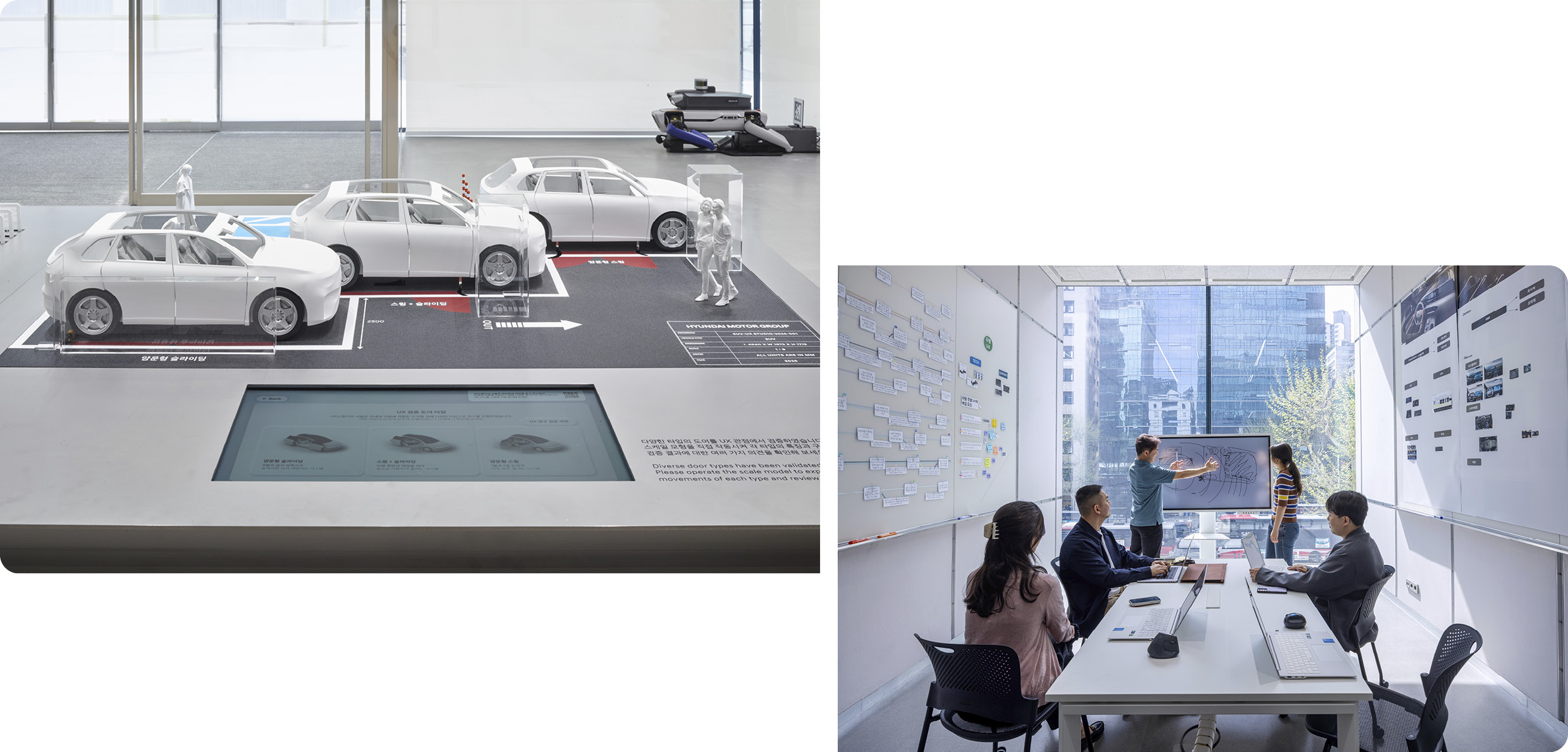
UX Studio Seoul is broadly divided into two main zones. The first floor features the Open Lab—an open, interactive space for hands-on experiences. The second floor houses the Advanced Research Lab, where UX researchers and selected users collaborate on UX research and feature development.
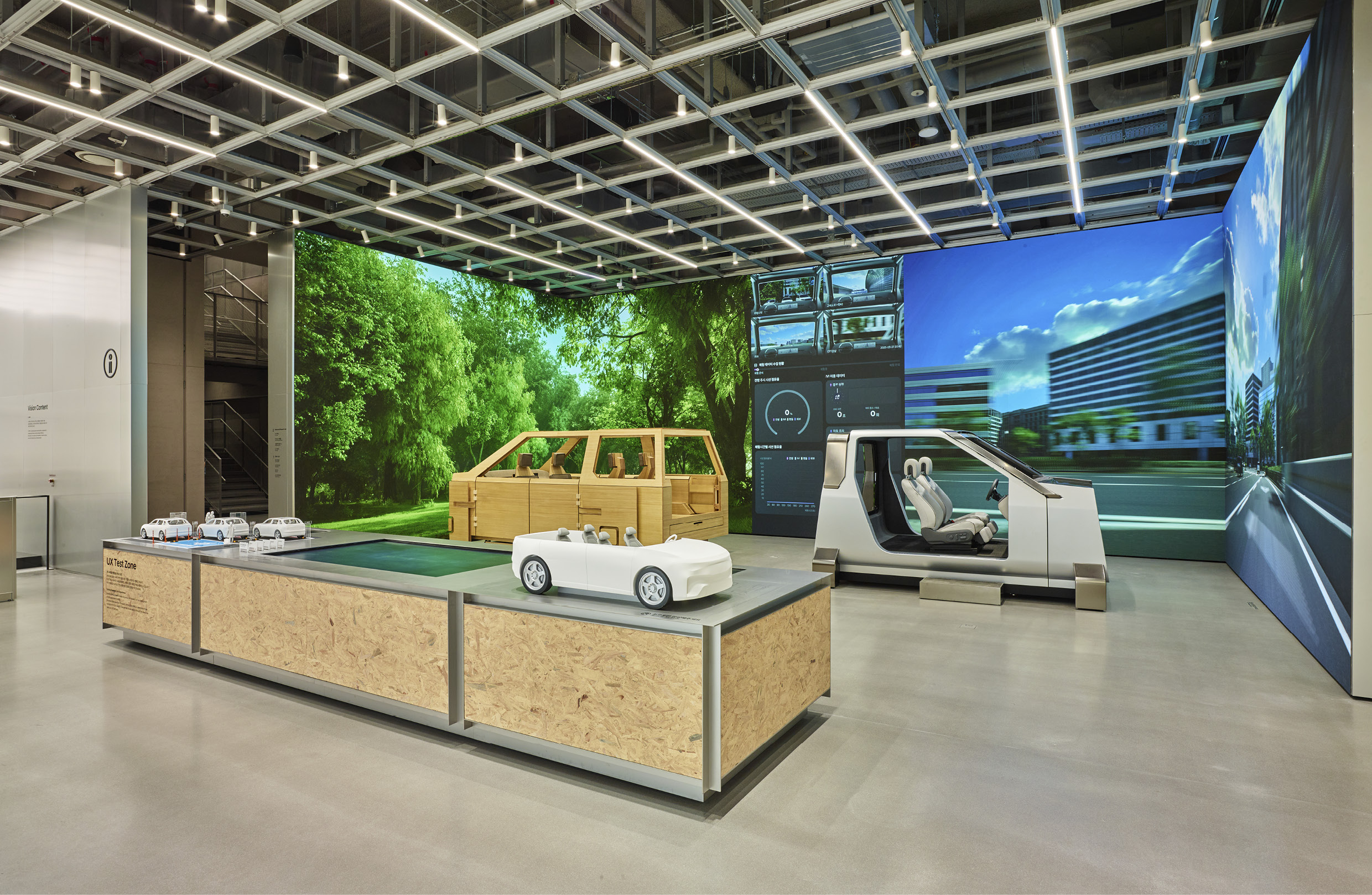
The Open Lab offers visitors full access to every stage of the UX research process. As they move through the UX Test Zone, SDV Zone, and UX Archive Zone, they can explore Hyundai’s cutting-edge future mobility UX technologies and actively participate in the research process.
Visitors begin their journey at the UX Test Zone, which encompasses the entire process of UX concept development, implementation, and validation. The zone is divided into three sections: UX Insight, UX Concept, and UX Validation.
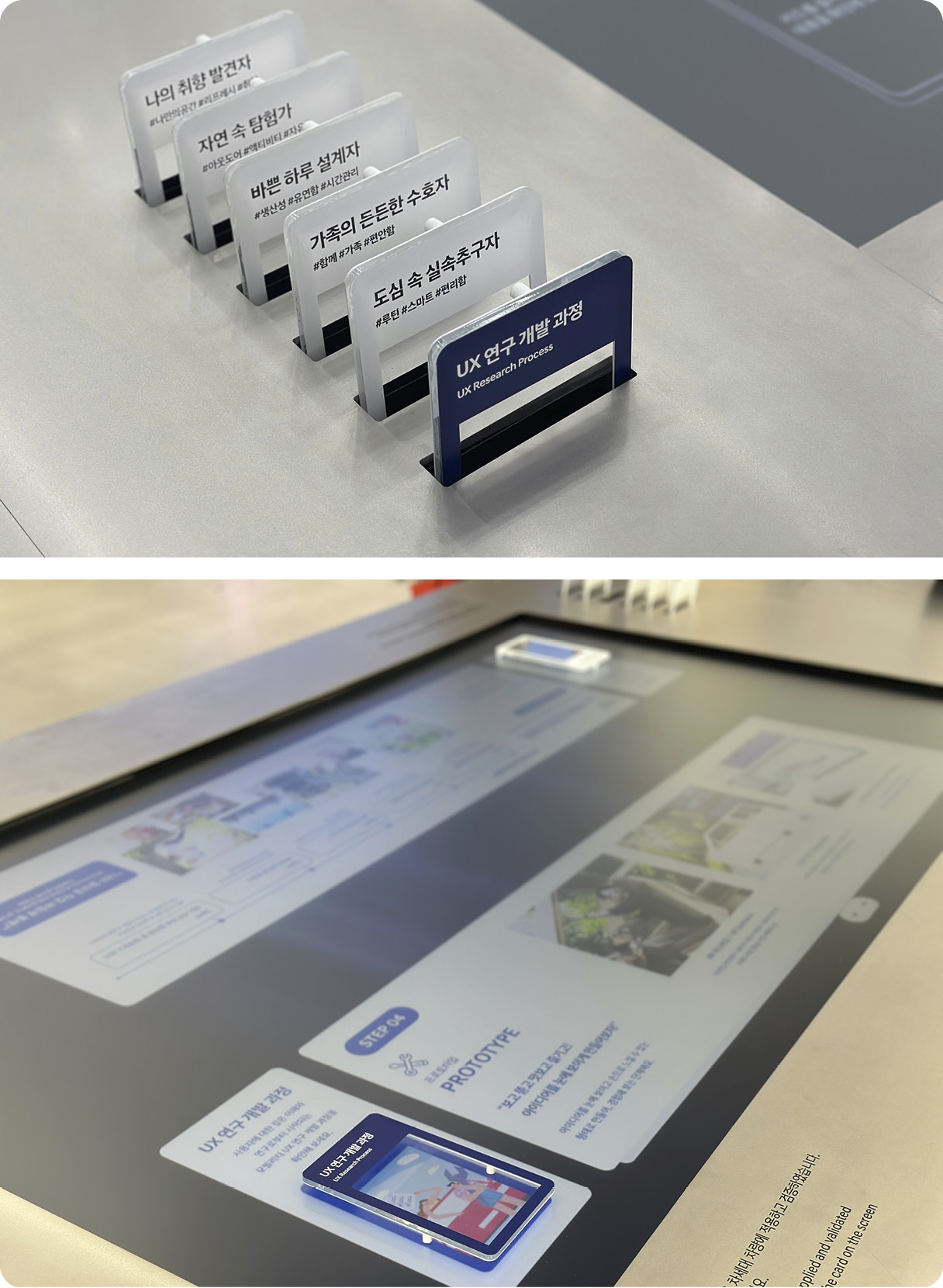
The UX Insight section features content designed to help visitors explore the overall UX research process. A large table-style media display illustrates how UX research is integrated into real-world vehicle development. Visitors can also explore a range of personas—fictional characters in UX design that each represent a specific user with a unique lifestyle. These insights lead into hands-on research in the UX Concept section, where visitors engage with a Buck, or vehicle mockup.
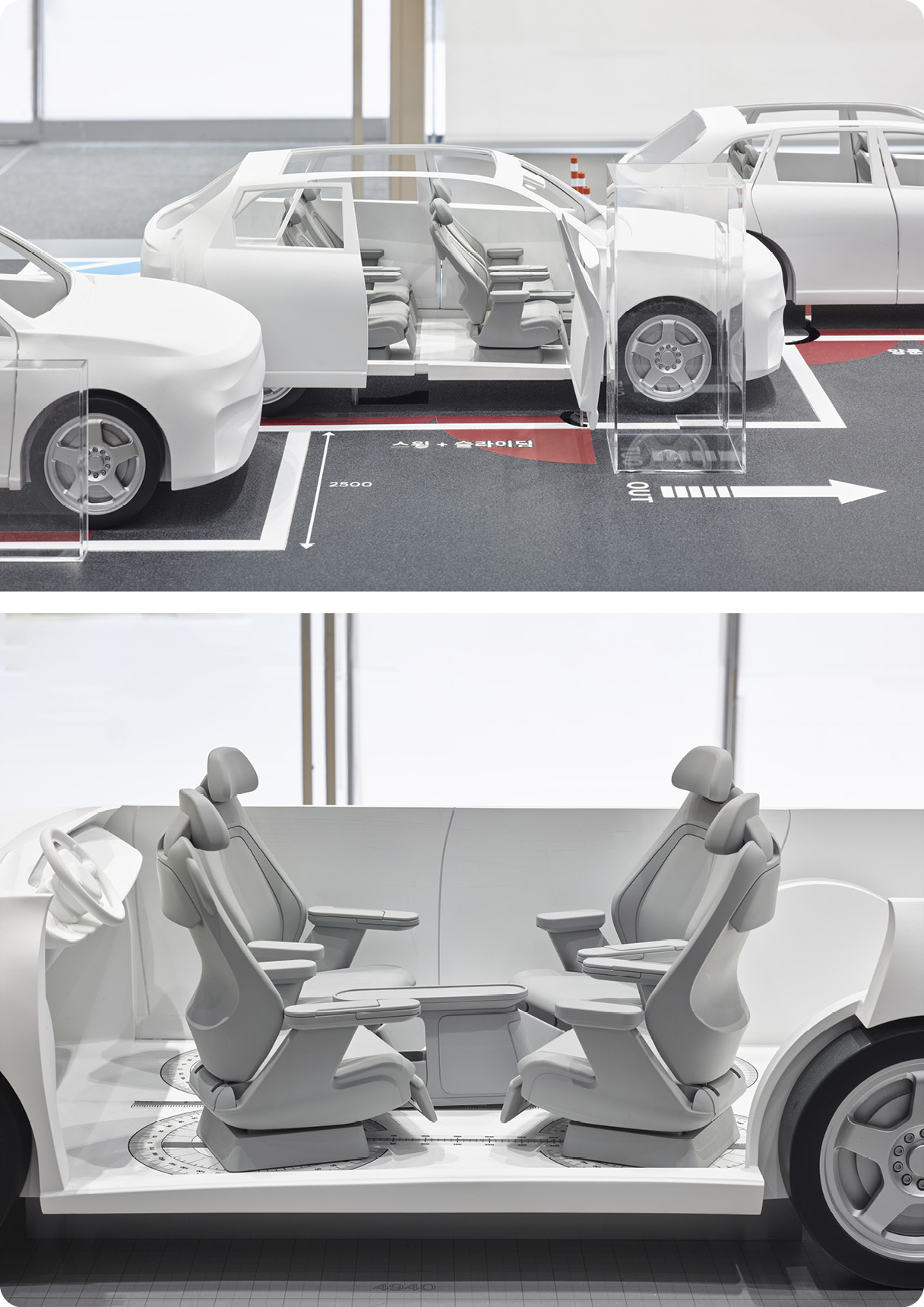
The UX concepts developed through research are brought to life as full-scale prototypes. Visitors can explore detailed mockups that showcase actual door concepts, seating arrangements, and moving console designs. A variety of door mechanisms are on display—including dual swing doors, swing-and-slide doors, and dual sliding doors. Visitors can also experience different seating and console configurations, from traditional four-seat layouts to face-to-face arrangements, and gain a better understanding of the value each setup provides. Those who wish may also share their feedback.
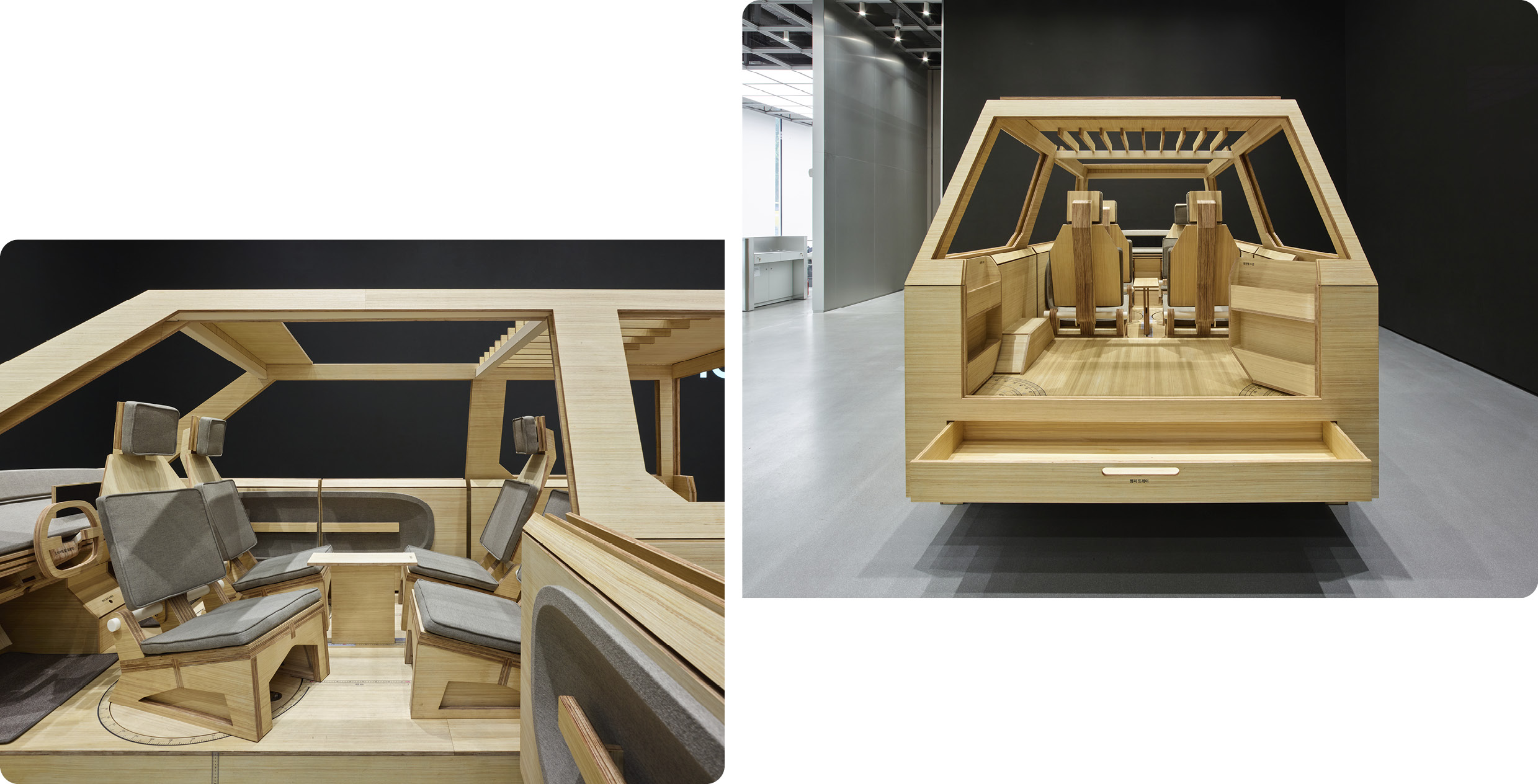
Ideas generated during the UX Insight phase are further refined and brought to life in the UX Concept section. Through a wooden Study Buck—a full-size mock vehicle used for usability testing—visitors can explore concepts such as cabin layout, seating and storage functions, and movable consoles. These experiences become even more immersive through the use of VR technology. Feedback and user behavior collected during this process serve as valuable data directly applied to vehicle development.
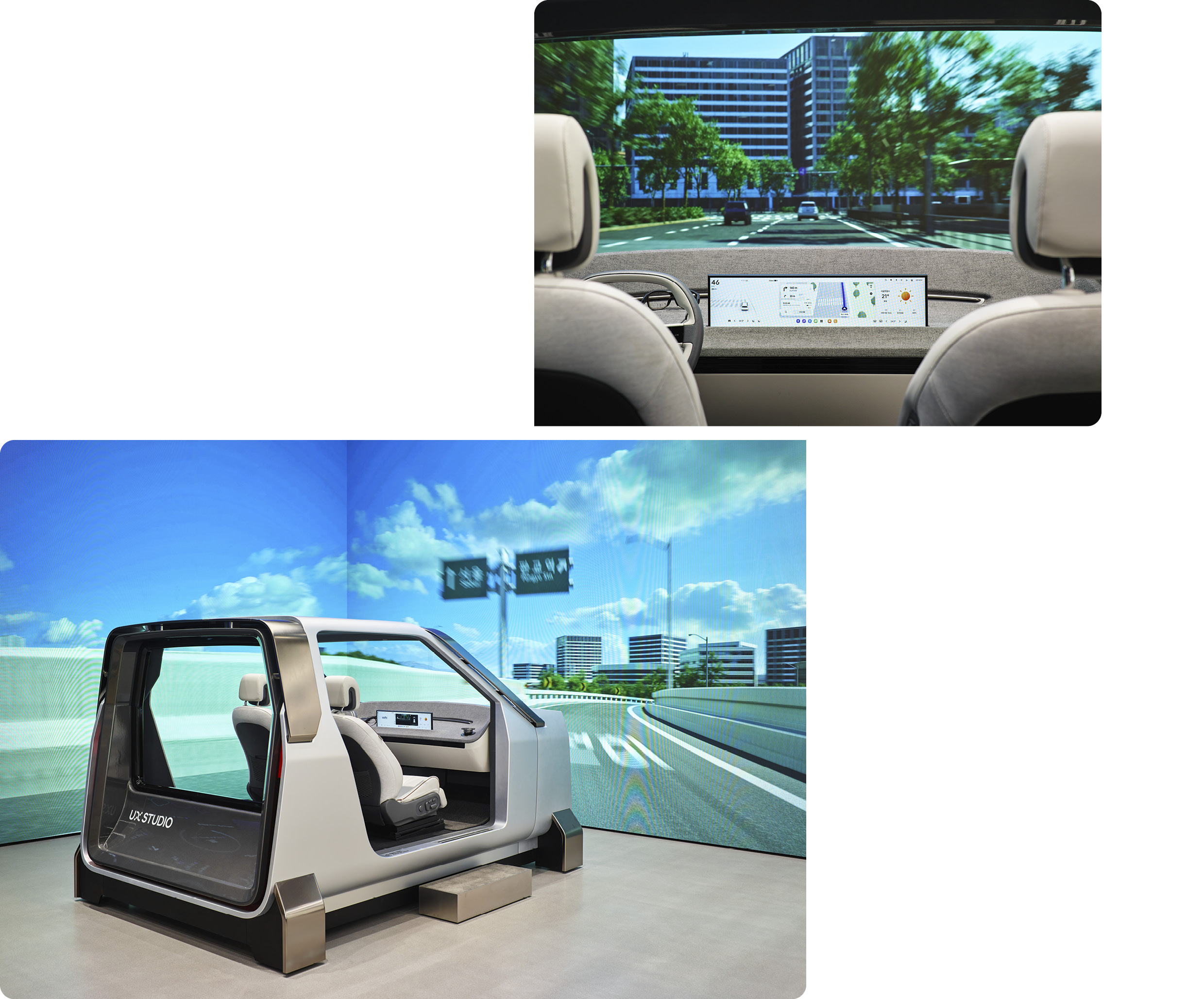
The UX Validation Zone offers an immersive look into how UX research unfolds in complex driving scenarios. Visitors step into a validation Buck—a life-size vehicle mockup equipped with operational interfaces—and experience everything from HMI (Human-Machine Interface) interactions to simulated driving situations, all from the perspective of either the driver or passenger. A large LED screen displays real-time scenarios, allowing nearby visitors to observe and engage with the testing and validation process.
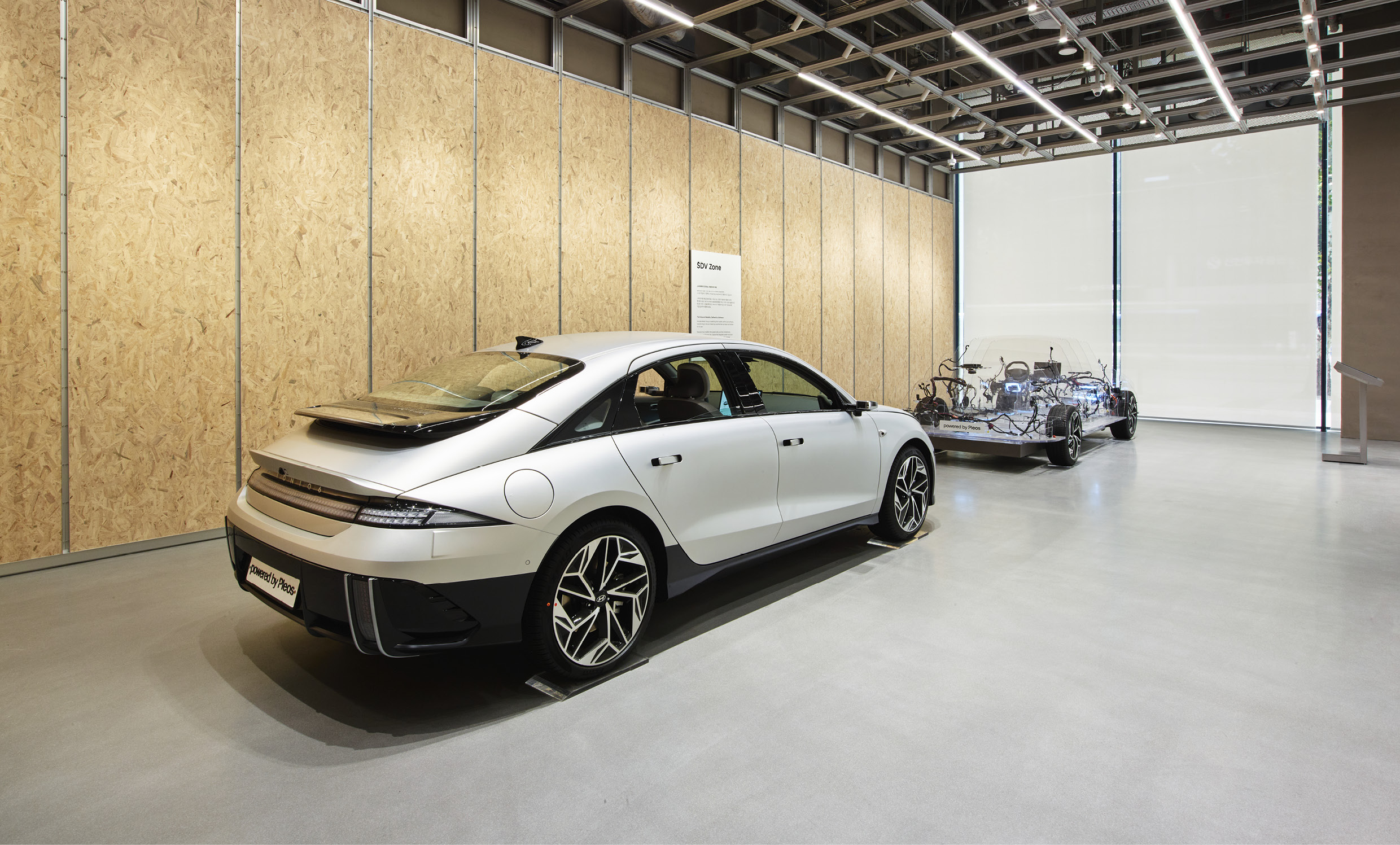
The SDV Zone offers a hands-on look at how software is shaping the future of mobility. On display are key technologies first unveiled at Hyundai Motor Group’s developer conference, Pleos 25, held this past March. From the decoupled architecture that separates hardware and software to an actual vehicle built on this system, the zone offers insight into how SDVs simplify vehicle design and unlock new possibilities.

Upon entering the SDV Zone, the first thing that captures your attention is the E&E (Electric & Electronics) Architecture. The display reveals the vehicle’s internal structure, exposing controllers, cables, and design components for easy viewing. It also lays the foundation for the future implementation of Pleos Vehicle OS, the dedicated operating system for Software-Defined Vehicles.
Visitors can use the touchscreen kiosk placed in front of the architecture display to explore how software and hardware are integrated and controlled within an SDV system. A side-by-side comparison also makes it easy to see how much simpler and more efficient the system has become.

Visitors are welcome to step inside the SDV testbed vehicle and interact with its various functions. A key highlight is early access to Pleos Connect, Hyundai Motor Group's next-generation infotainment system. Built on Android Automotive OS, Pleos Connect enhances connectivity between mobile devices and the vehicle, allowing users to seamlessly access familiar apps and content while on the move. It offers a glimpse into a new dimension of in-vehicle experiences.

Next is the UX Archive Zone, a space that brings together Hyundai Motor Group’s UX research outcomes in a thoughtfully curated exhibition. It traces the evolution of mobility UX over time. The current exhibition explores the theme of “Vision” — the first in a sensory-focused series that will continue with future displays highlighting the remaining four senses.
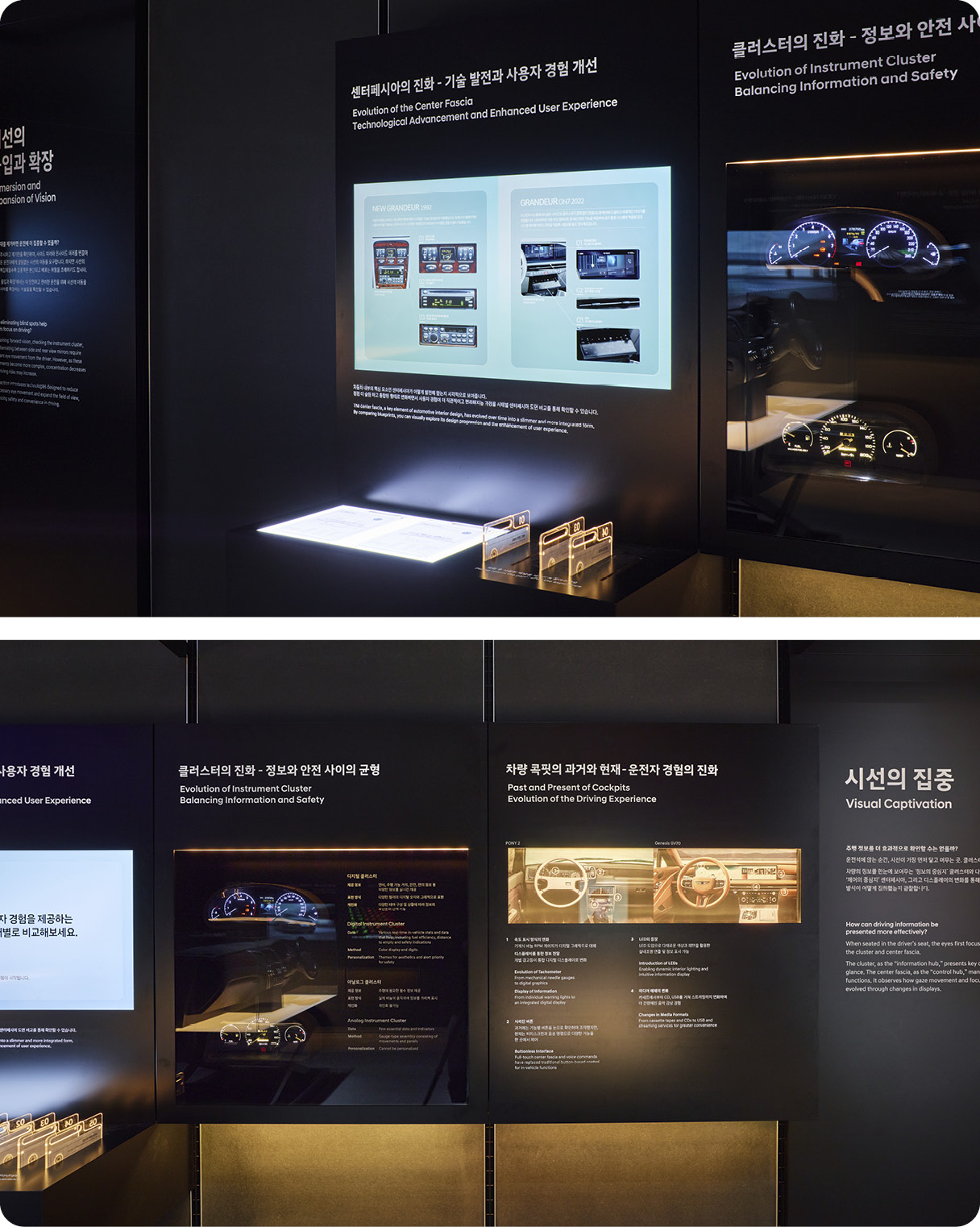
At the center of the exhibition, visitors are greeted by three distinct cockpit displays. Beginning with Hyundai’s first original model, the Pony, and moving through the Equus and the Genesis G80, the exhibit allows for a side-by-side comparison of how visual communication between driver and vehicle has evolved over time. Interactive content further highlights the transformation of key elements such as the cluster, where drivers first receive vehicle information, and the center fascia, which controls various functions within the vehicle.
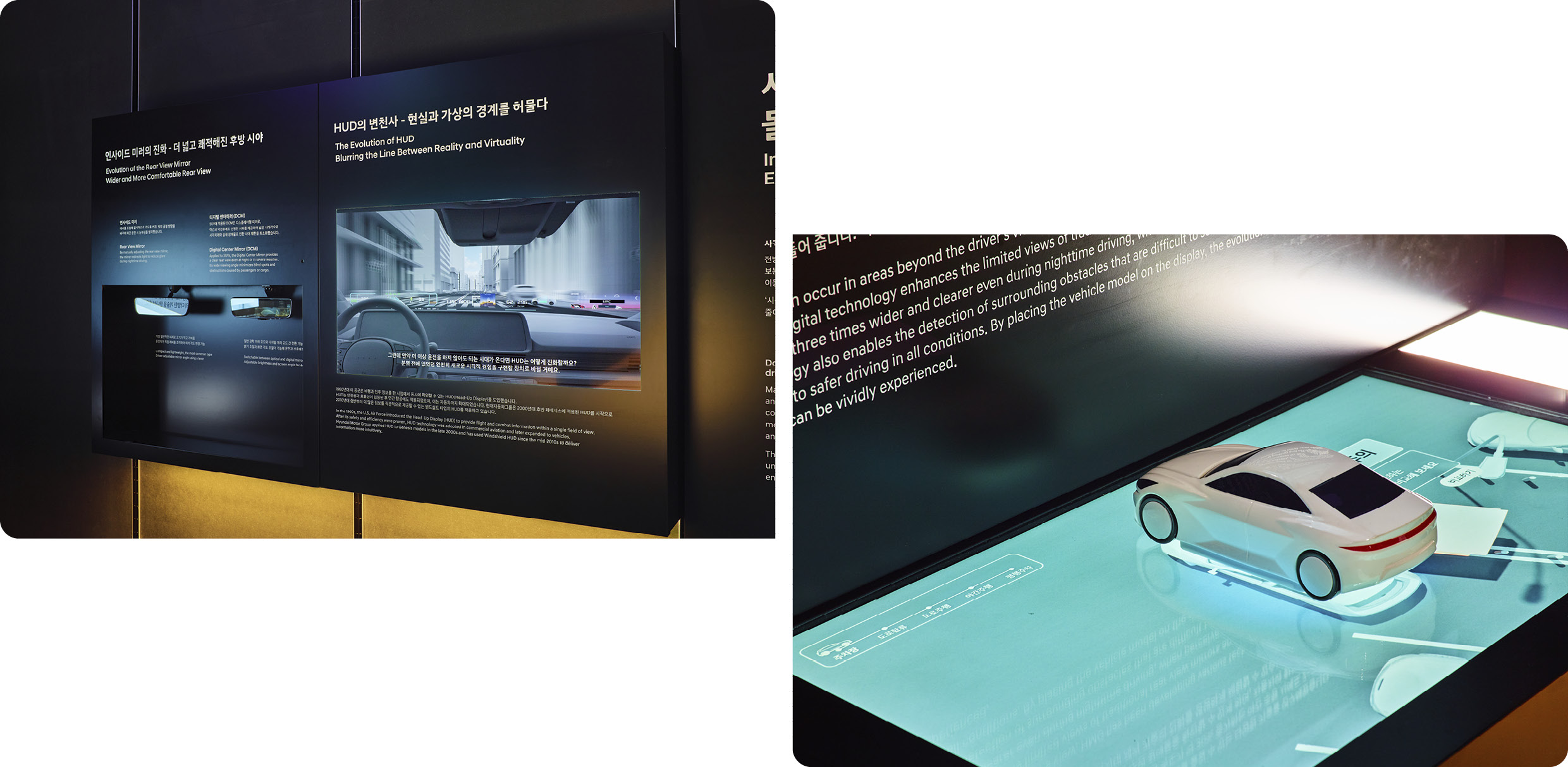
After exploring how clusters and center fascias guide the driver’s focus, the exhibition shifts to the theme of immersion and expanded vision. Visitors can experience how advanced systems provide a wider, more comfortable field of view with minimal and intuitive eye movement. Key examples include the head-up display (HUD) and digital mirrors. Additional features, such as the surround view monitor and blind-spot view monitor, demonstrate how far driver-assistance technologies have progressed—all presented in an engaging and easy-to-understand format.
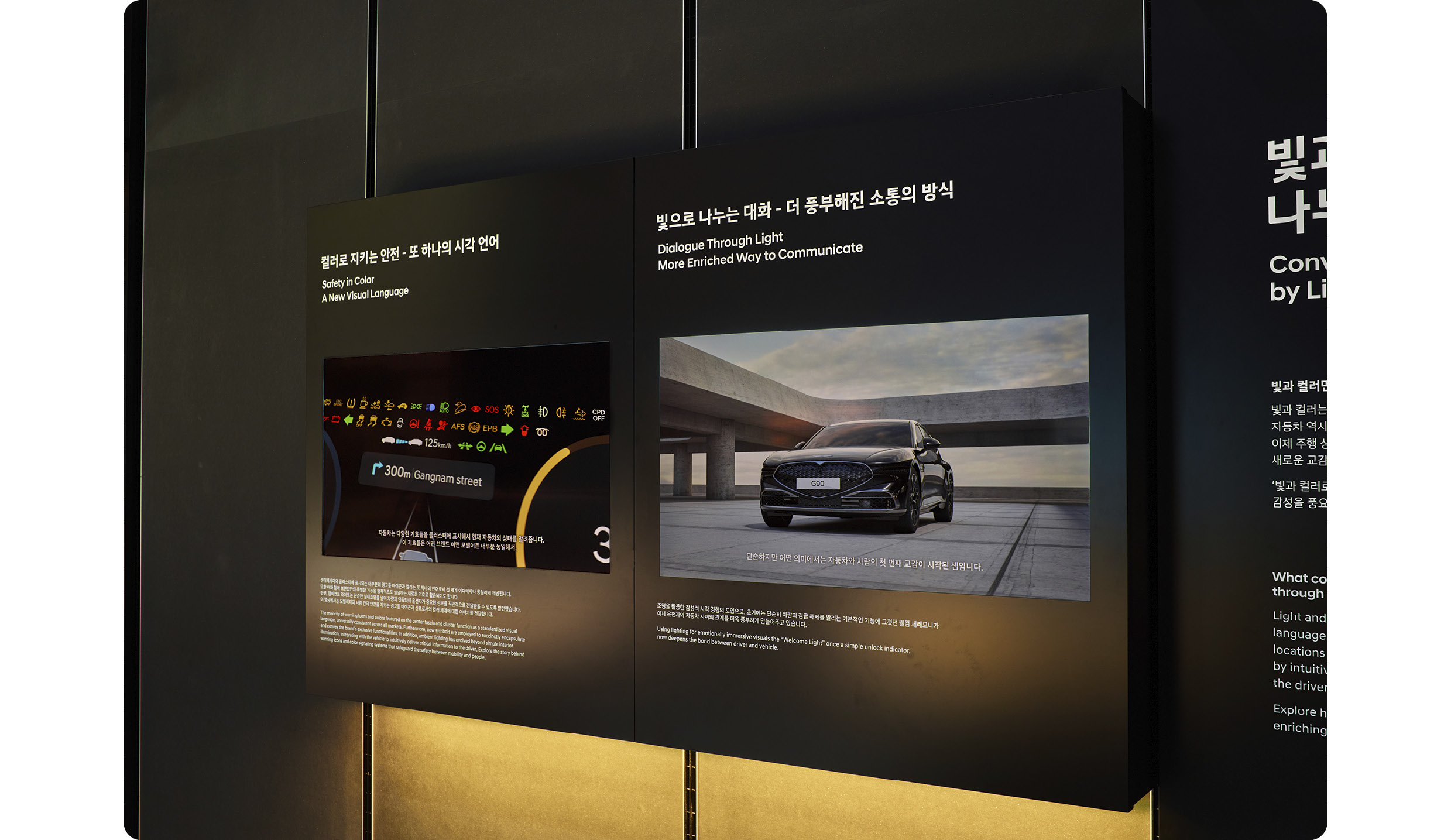
The visual language between the vehicle and the user is conveyed through light and color. This includes not only various indicator and warning lights shown on the center fascia and cluster, but also other visual elements—such as welcome lighting that activates when the driver approaches the car, or signature animations on the infotainment screen. Visitors can explore how these visual elements have evolved to deepen the emotional connection between driver and vehicle.
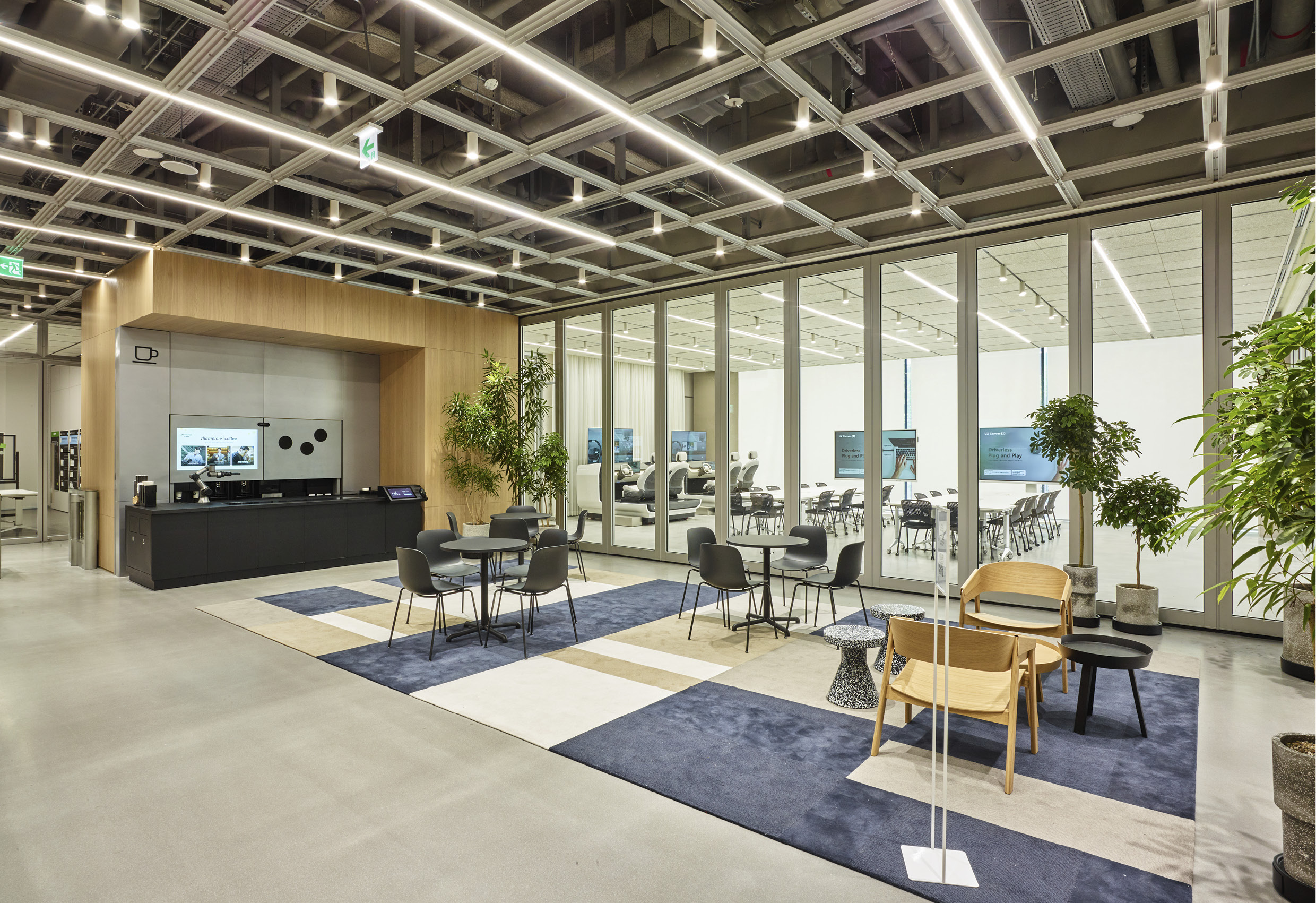
The Advanced Research Lab, located on the second floor, is a dedicated space where UX researchers develop technologies for future mobility. What sets this lab apart from other research facilities is its inclusion of real users at certain stages of the process—co-developing and validating UX concepts alongside the researchers themselves.
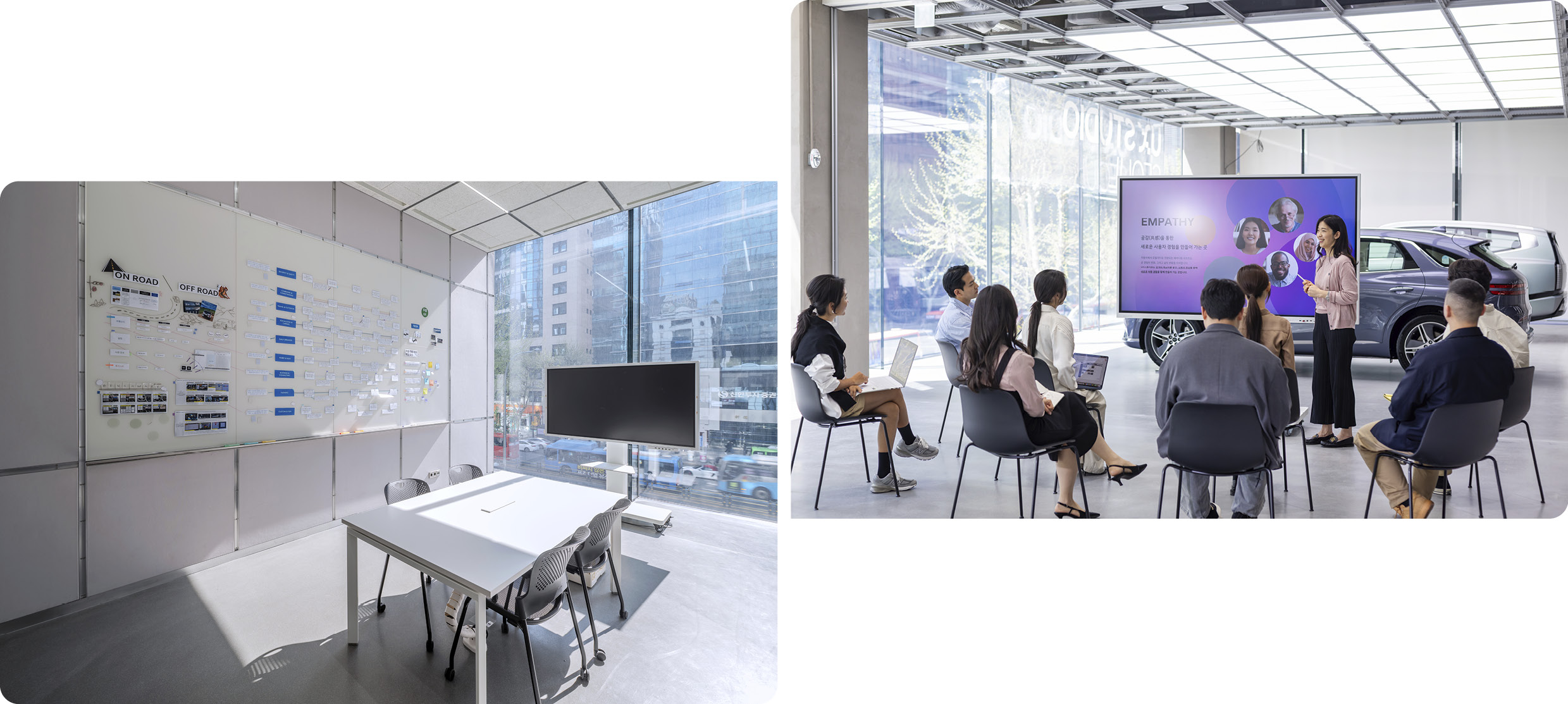
The Advanced Research Lab is divided into three main areas: the UX Canvas, the Feature Development Rooms, and the Simulation Room. The UX Canvas, directly connected to the Open Lab, functions as a collaborative zone where researchers and users come together to brainstorm and share ideas. The Feature Development Rooms are where hands-on R&D takes place. Divided into five rooms by feature, these spaces allow researchers to translate ideas and concepts into experiments and testing with speed and precision.
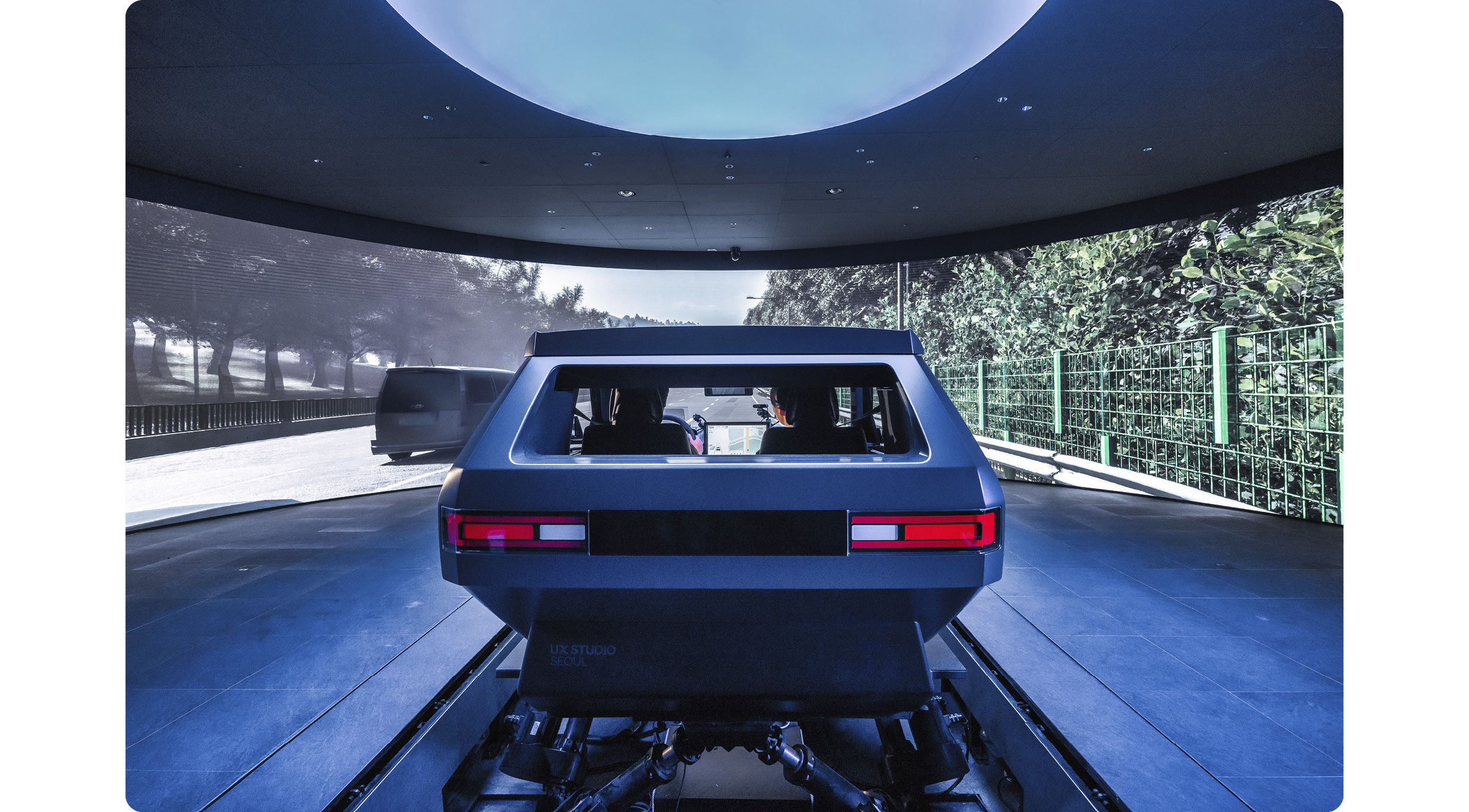
Once UX concepts are developed and tested in the UX Canvas and Feature Development Rooms, they move on to the Simulation Room for advanced validation. Here, researchers evaluate how each concept performs under simulated real-world driving conditions, identifying elements that work well and areas that require refinement. The modular test buck can be configured to represent various vehicle types—from sedans to large SUVs—and can replicate unexpected or hazardous situations that are difficult to stage on actual roads. This flexible setup allows for a tailored, scenario-based testing approach aligned with the specific objectives of each project.
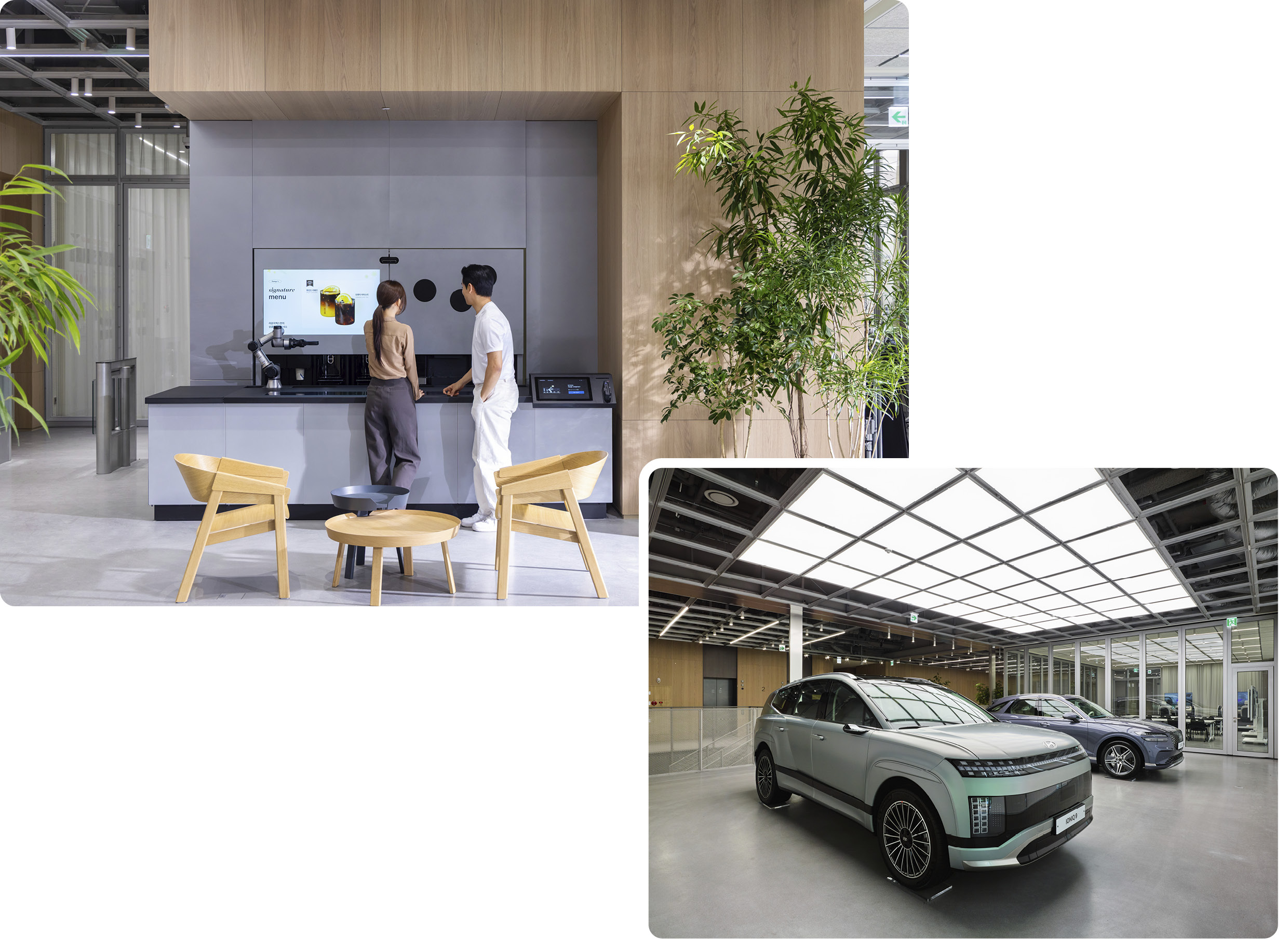
The second floor is not just for research. It also includes a display of Hyundai’s newest models featuring the latest in UX innovation, along with a UX Lounge where visitors can take a break after exploring the first floor. The lounge is carefully designed to be more than just a cozy space—it aims to spark inspiration and encourage new ideas in a comfortable, relaxed setting.
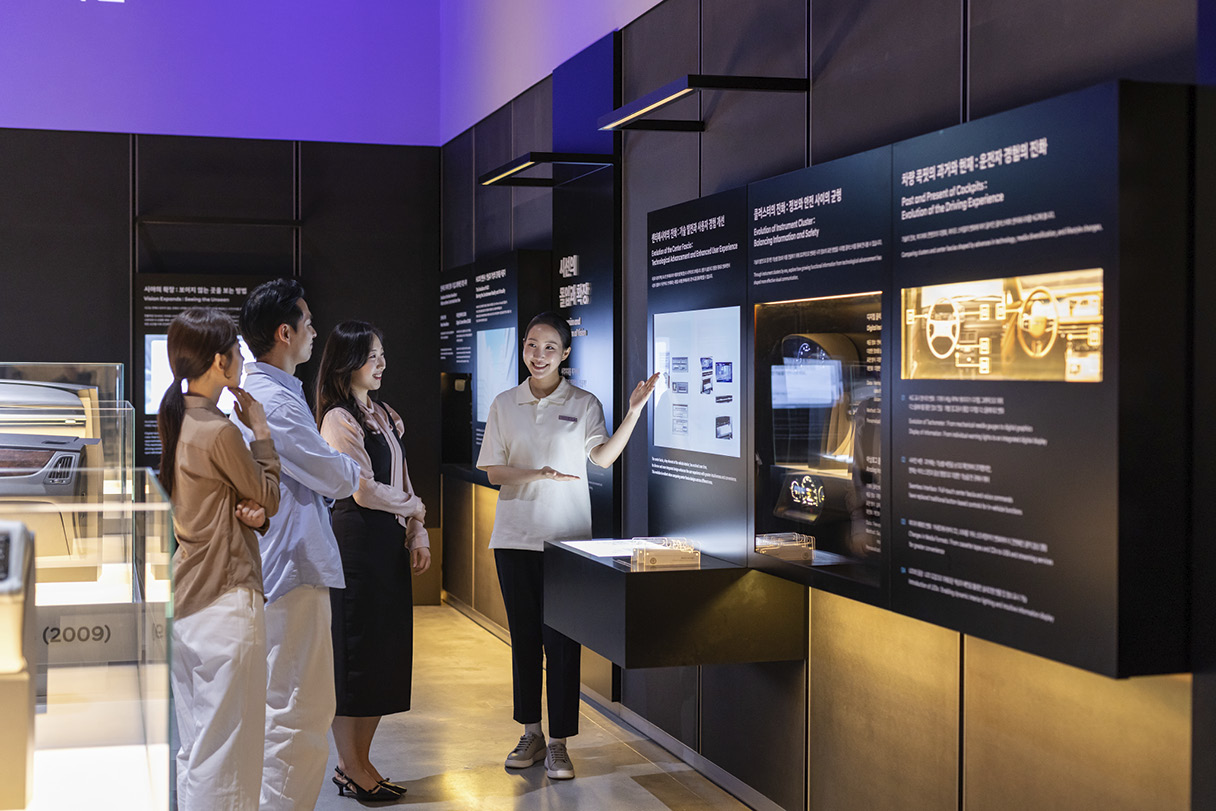
Above all, this facility is not just for researchers—HMG UX Studio Seoul is an open venue, accessible to anyone at any time. For those interested in exploring the studio’s mission and philosophy more deeply, free guided tours are available. The 30-minute Standard tour provides an overview of the core content, while the 60-minute Professional tour offers more in-depth explanations and opportunities for hands-on interaction. Reservations can be made online or on-site at no cost.
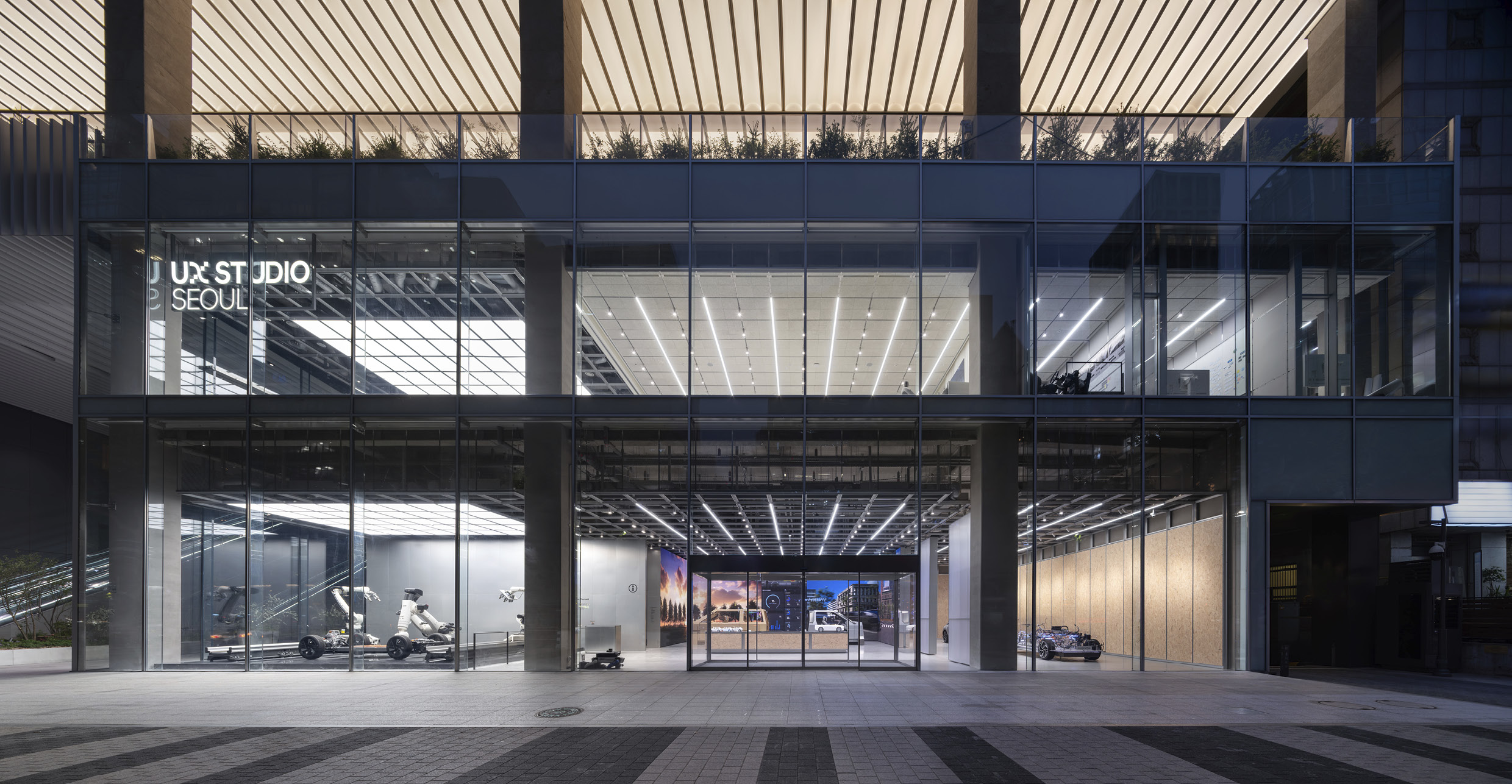
User experience is now expanding into entirely new dimensions. Hyundai Motor Group is embracing this evolution, working to create mobility UX that brings greater joy and ease to everyday life for everyone who interacts with a vehicle. UX Studio Seoul plays a central role in this vision—exploring the past, present, and future of UX, while continuously reflecting users’ preferences and feedback. As this journey continues, HMG’s commitment to building deeper, more meaningful connections with its users will never slow down.
Photography by Sun Namgoong, Kisu Park, Hyuksoo Cho